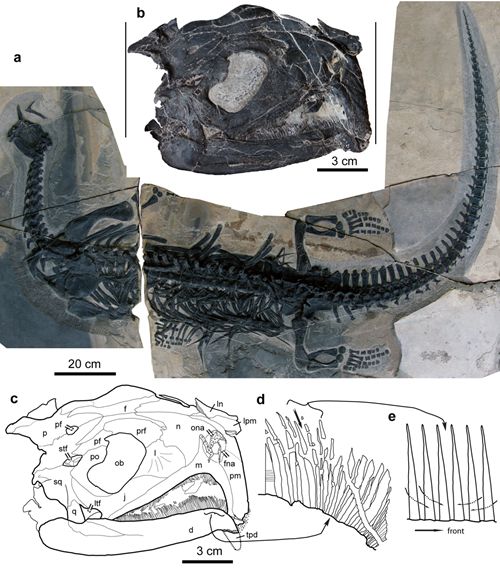2013 Top 10 Geological Survey Progresses
Top7. More advances were reported in stratigraphic-paleontologic research
Overwhelming advancement was made in the Precambrian stratigraphic research of China Critical changes have taken place in the lower limit age of the Changchengian system from the originally 1800Ma to 1650Ma, and the subdivision of the Mesoproterozoic strata was substantially updated, having critical implications on the understanding of early tectonic evolution of the earth. 1) the Gaoyuzhuang Formation originally assigned to Changcheng Group is now assigned to Jixian Group; 2) the upper limit age of the Changchengian system was updated to 1600Ma; 3) the forming time of Jixian system from the originally 1400-1000Ma to 1600-1400Ma; 4) Xiamaling Formation that was originally assigned to Neoproterozoic Qingbaikou system is assigned to Mesoproterozoic. Major changes took place in the subdivision of the Neoproterozoic strata in South China. Sibao (Guangxi), Fanjingshan (Guizhou), Lengjiaxi (Hunan), Xikou (Anhui), Shuangxiwu (Zhejiang) and Pingshui (Zhejiang) Groups which used to be regarded as Mesoproterozoic strata, are believed to have formed in the early years of Neoproterozoic after numerous primary rock zircon U-Pb dating efforts. Great amounts of streaked iron-bearing formations are contained in the Precambrian basement of the North China Craton and form the most important iron sources of China. Its metallogenic epoch was originally dated to Paleoarchen, Mesoarchen and Neoarchen. After further studies, the streaked iron formations of the North China Craton and their strata are believed to be originated in Neoarchen.
Important discoveries were also made in dinosaur studies. A new kind of the benthic filter sauropterygian family - therosaurus-mochlodon (a new species) was discovered in the Triassic of Yunnan. Fossil features indicate that its filtering was mainly made by shoveling bed mud with the chin and filtering benthic invertebrates within the teeth for food. This not only provides evidence that the sauropterygians reached the maximum radiation in the Mid-Triassic, but also the first representation of the biological type of benthic filter evolved from sauropterygians. A new species of oviraptors was discovered in Jiangxi's Ganzhou and Henan's Luanchuan and named Jiangxi Nankang dinosaur, Gangzhou Jiangxi dinosaur or mini Yulong. New varieties of oviraptor fossils are added which has great implications on the research of the paleo-geographic distribution and migration of oviraptors, offers important information for the individual development of oviraptors as well as basis for studying their living habits. The largest Jurassic dinosaur in China so far - Shanshan Xinjiang megalosaurus - was discovered for the first time, which will play an important role in investigating the composition and evolution of the Xinjiang dinosaur fauna, the Jurassic paleo-geography and paleo-climate, improving the stratigraphic subdivision and correlation precision and promoting the search of fossil energy.

Therosaurus-Mochlodon (a new species)

A new species of the oviraptor family - Jiangxi Nankang dinosaur - was discovered in Jiangxi's Ganzhou




